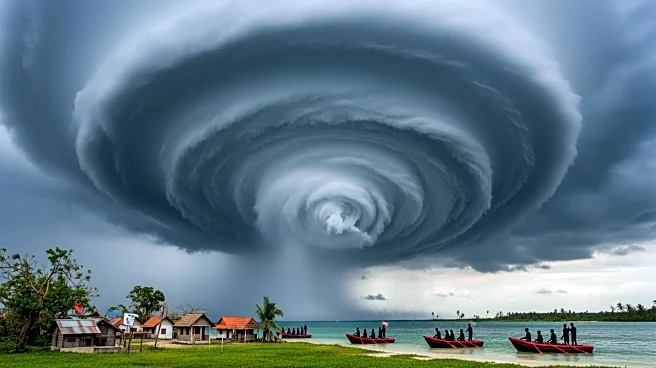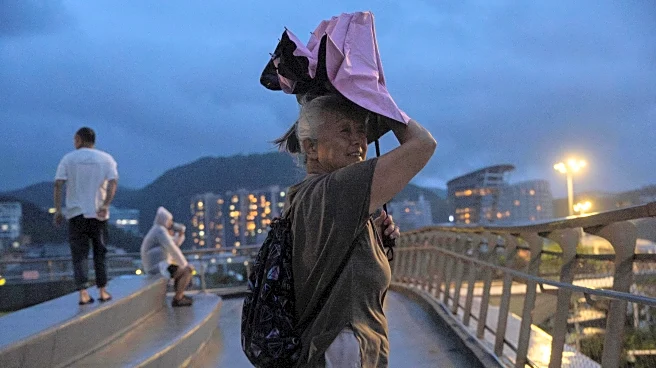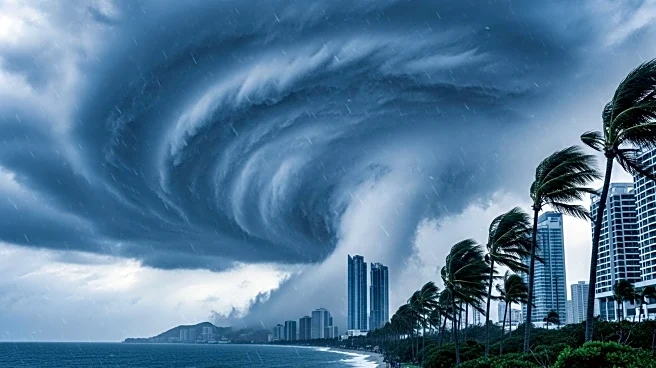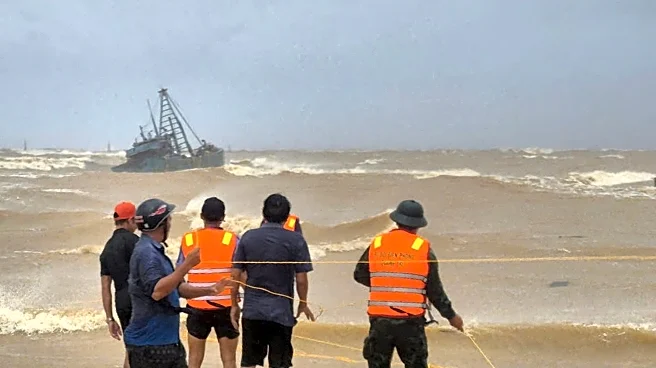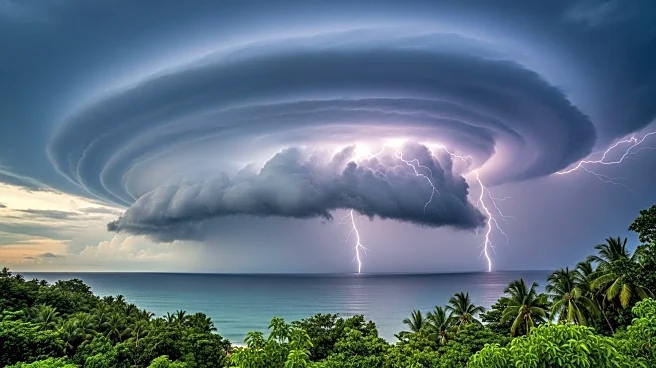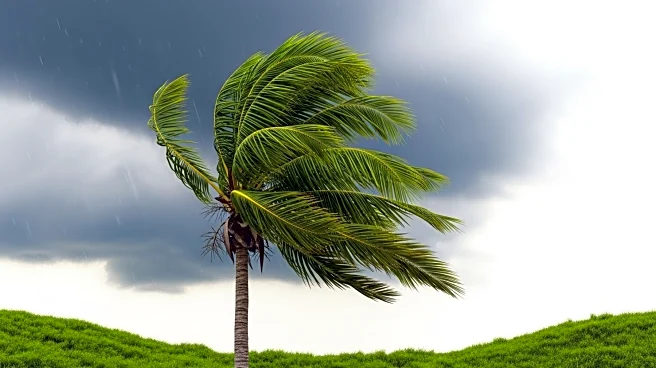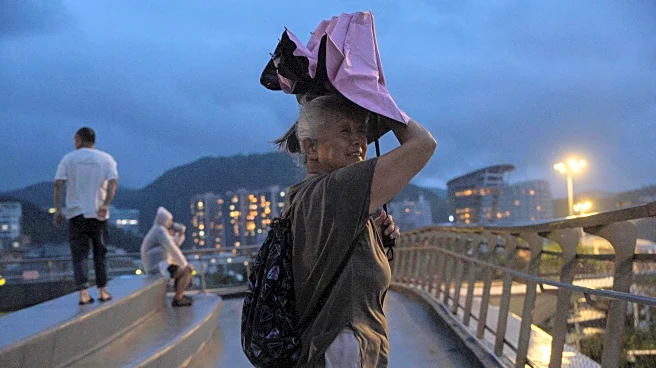What is the story about?
What's Happening?
Vietnam is undertaking large-scale evacuations as Typhoon Bualoi approaches, with landfall expected later today. The storm is moving faster than anticipated, bringing winds up to 133 kph (83 mph), storm surges over a meter high, and heavy rains that could lead to flash floods and landslides. Authorities have banned fishing activities in the northern and central regions and ordered evacuations in vulnerable areas by 5 p.m. Sunday. Da Nang plans to relocate over 210,000 people, while Hue is preparing to move more than 32,000 coastal residents. The Civil Aviation Authority has suspended operations at four coastal airports, including Danang International Airport, with several flights rescheduled. Heavy rains have already caused flooding in central provinces, with reports of missing persons and damaged property.
Why It's Important?
The impending landfall of Typhoon Bualoi poses significant risks to Vietnam's central and northern regions, threatening lives and infrastructure. The evacuations and airport closures highlight the severity of the storm's potential impact. The situation underscores the increasing frequency and intensity of tropical storms in the region, attributed to global warming, which is causing warmer oceans that fuel stronger storms. The economic implications are considerable, with disruptions to transportation and potential damage to homes and businesses. The response to the storm will test Vietnam's disaster preparedness and resilience, with the potential for significant humanitarian needs if the storm causes widespread damage.
What's Next?
As Typhoon Bualoi makes landfall, authorities will continue to monitor the situation closely, focusing on rescue operations and providing aid to affected areas. The government will likely assess the damage and begin recovery efforts once the storm passes. The international community may offer assistance if the situation escalates into a humanitarian crisis. Long-term, Vietnam may need to invest in more robust infrastructure and disaster response systems to better handle future storms, which are expected to increase in frequency and severity due to climate change.
Beyond the Headlines
The increasing intensity of storms like Bualoi highlights the broader issue of climate change and its impact on weather patterns. Vietnam, like many countries in the region, faces the challenge of adapting to these changes while balancing economic growth and environmental sustainability. The storm also raises questions about the adequacy of current infrastructure and emergency response systems in dealing with such natural disasters. As global warming continues to affect weather patterns, countries may need to collaborate on regional strategies to mitigate the impact of severe weather events.
AI Generated Content
Do you find this article useful?


